

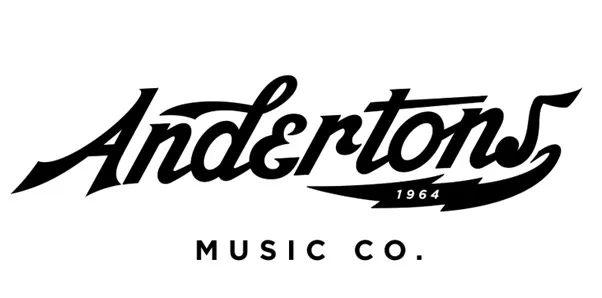
How To Make Your Brand Distinct
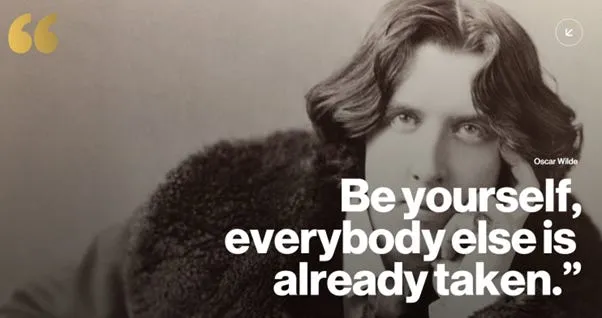
Distinct brands have an advantage
Let’s start with a simple rule of thumb. It’s easier – and therefore more efficient to get a distinct brand noticed and remembered than an indistinct one. But bear in mind – you might not be the best judge of how distinct your brand is – only consumer research will give you a good reading on that.
And according to Ipsos, of the $8.7trillion spent on marketing every year 85% is spent on assets that aren’t truly distinctive. Yikes.
Distinct or Different?
There has been a big debate within the marketing press on distinctiveness vs. differentiation. I think it helps to say that there are specific meanings of these two terms in marketing, so let’s examine what the big noises in marketing have to say about this.
We have been entertained by what has been a sort of low-level running spat between fellow Australians - the sort of Liam & Noel Gallagher of marketing – practitioner and marketing MBA course creator Mark Ritson, and pure academic at the Ehrenberg-Bass Institute for Marketing Science Byron Sharp.
Differentiation isn’t really a thing
As a true scientist, Byron Sharp believes there is no evidence that differentiation leads to brand growth or profitability. According to Sharp, a 1959 study showed that there was no difference between Ford and Chevrolet buyers. Previously it had been assumed that buyers attracted to the two brands would be different, and reflect the differences of the brand. Like all brands, there were loyal followers for both Ford & Chevrolet, but loyalty is a characteristic of consumer behaviour, rather than something driven by brand differences.
According to Sharp (in his book ‘How Brands Grow’) "Buyers don't need to see differentiation to buy a brand, or to keep on buying it"
Most (77%) of Apple users for instance do not perceive their brand to be different or unique. (But we all know how attached they seem to be to it).
What empirical evidence shows is that buyers seem to know something about brands they use, and very little about ones they don't. Hence buying on true differences can be tricky.
Forget the USP – but brands should be different
Operating more from experience and instinct perhaps – Mark Ritson somewhat disagrees. First up, Ritson points out that differentiation – especially if denoted by ‘something unique’ is very difficult to achieve. At least in highly developed consumer categories this is easy to prove. Look at mass market car brands today, or what real differences there are now between an iPhone and a Samsung.
Ritson argues for ‘relative differentiation’ where the goal is not to be unique, but instead to have more of something than other brands do within the category.
For the owner or manager of smaller brands, this debate about levels of differentiation can all begin to look a bit academic. But I will try to deduce some simple takeaways. Sharp and Ritson seem to be arguing mainly about differentiation. There seems to be no dispute about distinctness.
So to sum up where we get left on differentiation it would be this:
In the past (i.e. largely the 20th century) marketing experts promoted the idea that the route to brand success was predicated on being different to your competitors - having a USP (unique selling point). Modern marketing science has largely debunked this. Real world data on consumer purchasing behaviour shows that purchases are not made because of USPs, but for a myriad of reasons – many which may have nothing to do with a brand’s ‘points of difference’. Consumers might like the look of it or it might be the only brand remembered. Their friend may use it. It may have been the only one on the day. It may have been on sale. So instead of looking for your brand’s USP, consider: If people remember my brand at all – what is the one attribute I want them to associate with it? You will be doing well if they remember your brand, you will be pushing your luck if you expect them to remember more than one attribute.
Distinctness
Distinctness is more straightforward. It is purely about being easily recognised. Standing out from the crowd in your category and being remembered. Brands that are easily recognised and remembered will be more likely to be considered even if they are not better or different.
Bear in mind though that there can be a price for complete incongruity. Unless you are a mega-brand, it might be important for people to understand what type of product your brand is. So you brand’s identity needs to be distinct but might also have to provide some clues – or even a descriptor – about what it is.
So what should your brand look like? Well the brand look shouldn’t be pulled out of the air.
Developing a new identity for an existing business
Pull has developed identities for a number of new brands. This brand for ecommerce giant allbeauty is a good example. It can be a lot of fun to have a complete clean canvass. In this case everything from and including the name was designed by Pull.
But what if the brand already exists? This will always provide some tough challenges – it is possible to actually do more harm than good. . .
The Pull Agency’s approach is to be as scientific as we can be – and then get creative. This means determining the actual character of the brand via consumer research first. We are great believers in the idea that a ‘re-brand’ is really a bit of a last resort and that in most cases a brand identity needs progressing. Much of the brand development work we do is done because of a failure of a brand to progress over time.
Progressing a brand identity can also be important as you typically still want people to recognise your brand, otherwise a lot of your legacy investment will be wasted.
But sometimes, you really need to start over. Why would you do this? In our view the only scenario is where either the brand identity is (a) so poorly developed and confusing that it is doing your brand a disservice or (b) that the identity doesn’t match the brand personality.
Both were true when the UK’s leading online music retailer Andertons came to the Pull agency.
We try to be polite but frank. Our verdict – the brand looks not so much rock ‘n roll but more Kwik Fit.
Andertons’ pre-existing identity: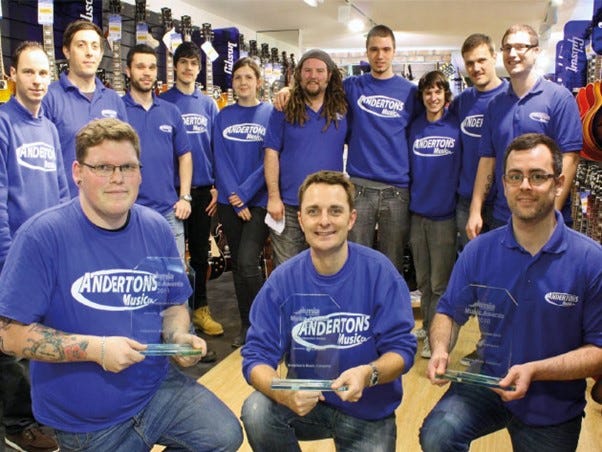
So we created a Brand Blueprint ™ for Andertons based on staff workshops and Quant and Qual research.
Born in the 1960’s – heady times for rock music in England – Andertons is steeped in heritage. Passion for music and a wonderful provenance of selling musical instruments creates their great back-story. The more we talked to Andertons’ customers and staff the more we realised: they all shared a passion for making music. Andertons’ customers repeatedly said the same thing.
So we helped Andertons bring their provenance to the forefront and define their purpose for the first time. It wasn’t ‘To be the UK’s no.1 musician’s retailer’. It wasn’t even about making music, it was ‘Making Musicians’. (Finding Andertons’ Purpose was covered in my previous article)
It was clear from our research that Andertons’ personality was as a legacy brand – but cool, rooted and highly approachable, inspiring huge affection among its customer base. So our task was to craft a new identity that was actually ‘more Andertons’ than the existing one. More reflective of the heritage, craft and passion of the music industry.
We scanned the music industry to identify and classify the design language deployed by instrument makers (below), record labels, bands and streaming music brands.
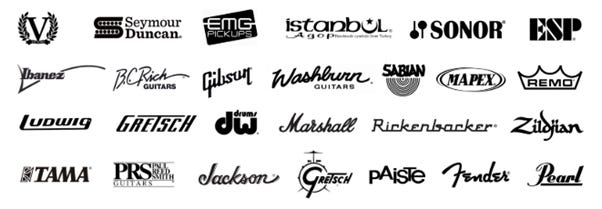
The strategy then developed was to combine influences to create a unique new marque. The goals was to create a logotype that:
- Was unique
- Had a ‘signature’ look
- Implied a strong heritage
- Was instantly recognizable
This was the outcome:
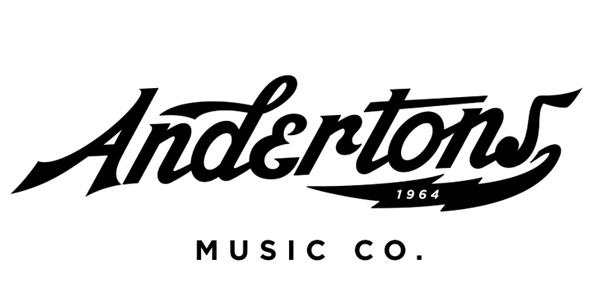
As always – a whole host of additional brand assets were generated including an icon.

And a host of other elements including a design for Anderton’s physical shop refit and Andertons TV (YouTube channel with almost 1m subscribers)
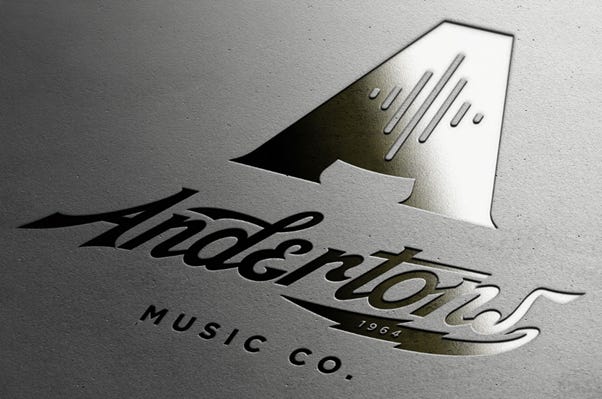
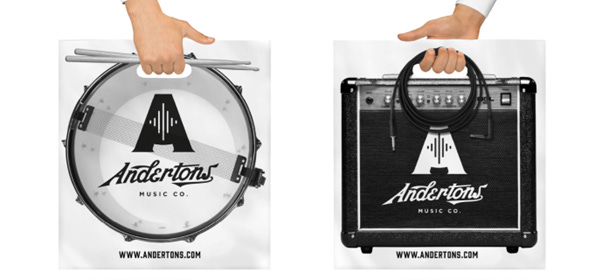
Is the logo distinct? You can be the judge. However, it got an ecstatic response from Andertons fans on social media polls. This is unusual in that people can still get attached to brand identities that marketers and designers would consider poorly crafted. This is just the effect of familiarity, but something that brand owners should consider when significantly revising the look of a brand.
In terms of the results of this brand makeover? Well a number of things happened for Andertons in the year following. Firstly they recorded a record year in terms of financial performance. The new identity also launched them on to a global stage. Andertons won the prestigious NAMM Dealer of the Year and NAMM Best Online Engagement awards. The project went on to win 3 prestigious international awards from Transform magazine for brand development.
But proof the new identity was truly cool and desirable arrived when blues rock guitar prodigy Eric Gales (AKA Raw Dog) was seen onstage wearing an Andertons T-shirt.
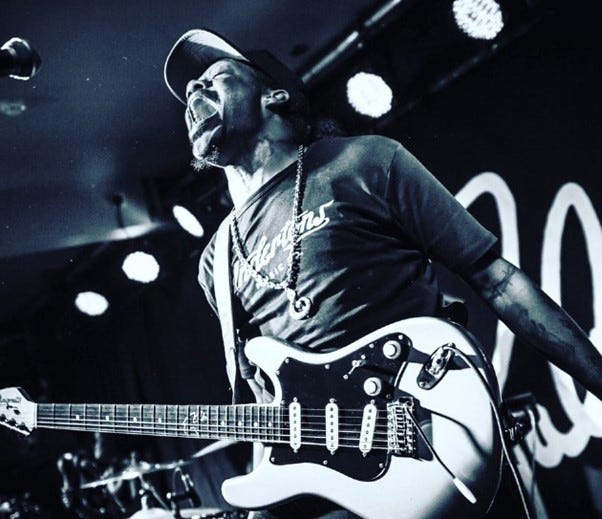
Mission accomplished.
You can read the full story here.
Posted 6 September 2023 by Chris Bullick